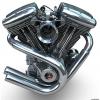Ok guys enough, let's not debate any vender or purity issues here. We created a board for that discussion. This board is primarily for Nicotinamide Riboside Current News and Updates but if it's related to NR or is related to NAD news I'll have no problem with it here. Over the holidays there has been a decline in publications related to Nicotinamide Riboside and we've had little else to talk about but that news drought is about to change.
Now I have no Idea the implications of the following article but it's the first news of the New-year mentioning NR. Let's keep them coming guys.
01/07/2015 | 08:39pm US/Eastern
Study Findings from GlaxoSmithKline Provide New Insights into Biochemistry and Biophysics (A pre-steady state and steady state kinetic analysis of the N-ribosyl hydrolase activity of hCD157)
By a News Reporter-Staff News Editor at Life Science Weekly -- Current study results on Life Science Research have been published. According to news originatingfrom Research Triangle Park, North Carolina, by NewsRx correspondents, research stated, "HCD157 catalyzes the hydrolysis of nicotinamide riboside (NR) and nicotinic acid riboside (NAR). The release of nicotinamide or nicotinic acid from NR or NAR was confirmed by spectrophotometric, HPLC and NMR analyses. hCD157 is inactivated by a mechanism-based inhibitor, 2'-deoxy-2'-fluoro-nicotin-amide arabinoside (fNR)."
Our news journalists obtained a quote from the research GlaxoSmithKlinefrom, "Modification of the enzyme during the catalytic cycle by NR, NAR, or fNR increased the intrinsic protein fluorescence by approximately 50%. Pre-steady state and steady state data were used to derive a minimal kinetic scheme for the hydrolysis of NR. After initial complex formation a reversible step (360 and 30 s(-1)) is followed by a slow irreversible step (0.1 s(-1)) that defined the rate limiting step, or k(cat). The calculated K-Mapp value for NR in the hydrolytic reaction is 6 nM. The values of the kinetic constants suggest that one biological function of cell-surface hCD157 is to bind and slowly hydrolyze NR, possibly converting it to a ligand-activated receptor. Differences in substrate preference between hCD157 and hCD38 were rationalized through a comparison of the crystal structures of the two proteins."
According to the news editors, the research concluded: "This comparison identified several residues in hCD157 (F108 and F173) that can potentially hinder the binding of dinucleotide substrates (NAD(+))."
For more information on this research see: A pre-steady state and steady state kinetic analysis of the N-ribosylhydrolase activity of hCD157.Archives of Biochemistry and Biophysics, 2014;564():156-163. Archives of Biochemistry and Biophysics can be contacted at: Elsevier Science Inc,360 Park Ave South, New York, NY 10010-1710, USA. (Elsevier - www.elsevier.com; Archives of Biochemistry and Biophysics - www.elsevier.com/wps/product/cws_home/622787)
The news correspondents report that additional information may be obtained from F. Preugschat, GlaxoSmithKline, Res Triangle Pk, NC 27709, United States. Additional authors for this research include L.H. Carter, E.E. Boros, D.J.T. Porter, E.L. Stewart and L.M. Shewchuk (see also Life Science Research).
Keywords for this news article include: Hydrolases, United States, North Carolina, Enzymes and Coenzymes, Life Science Research, Research Triangle Park, North and Central America
Our reports deliver fact-based news of research and discoveries from around the world. Copyright 2015, NewsRx LLC
© 2015 NewsRx LLC
 Rescue Premature Aging in Cockayne Syndrome.pdf 1.38MB
26 downloads
Rescue Premature Aging in Cockayne Syndrome.pdf 1.38MB
26 downloads






























 This topic is locked
This topic is locked































